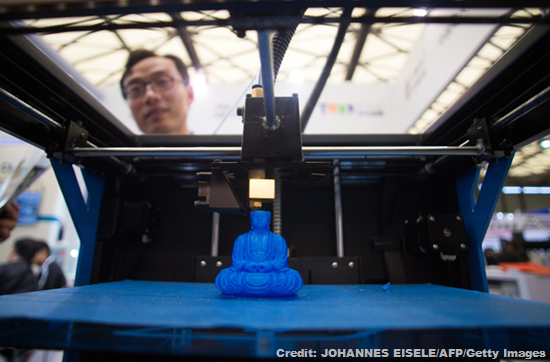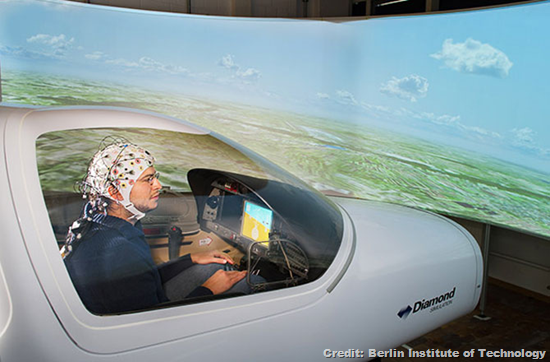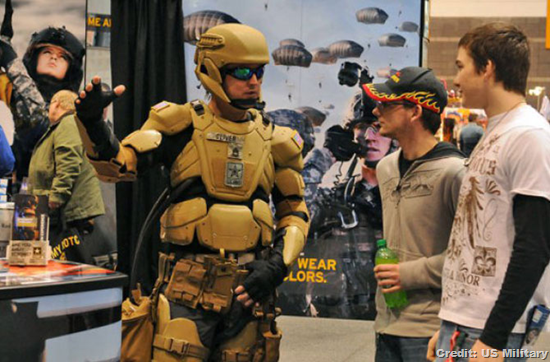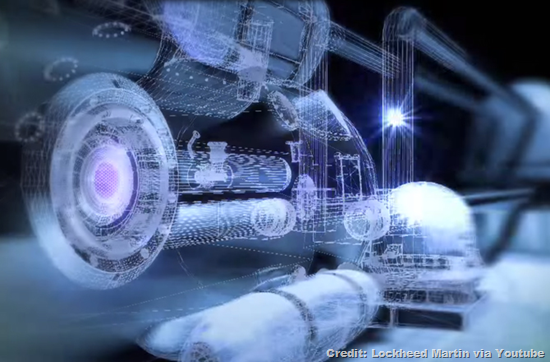
Some technologies, like solar power, which have been around for decades made shining breakthroughs this year, while others you may have never heard of, like quantum teleportation, came on strong. Check out ten technologies from 2014 that never let up the entire year.
1. Solar Power
The average solar panel now costs about 75 percent less than it did just five years ago and the price
continues to drop.
A report from the US Department of Energy says, "The year 2014 marks a significant milestone in the history of American solar energy." Five new concentrating solar power plants (three in California, one in Nevada and one in Arizona) were scheduled to come online in 2014.
The biggest of those - and so far, the world's largest - is the Ivanpah Solar Electric Generating System in California's Mojave Desert, which came online earlier this year and is generating 392 megawatts (MW) of power, enough to provide 140,000 homes with electricity.
Solar power has come down drastically in price. Advances in the underlying technology of solar panels as well as ramped-up production in China has made this form of renewable energy competitive with natural gas, even as the price of fossil fuels drops. According to Forbes, the full-cycle, unsubsidized cost of solar power is about 13 cents per kilowatt-hour, versus 12 cents for advanced coal plants.
It should come as no surprise then that electricity generated from solar power plants is rising. As of September 2014, solar power in the United States reached 15.9 gigawatts of installed capacity, enough to power 3.2 million homes, reports Forbes. That number is more than twice as big as it was in 2013, according to the U.S. Energy Information Administration.
Efficiency levels are improving as well. Just this year, scientists at the University of New South Wales set a record by developing solar cells that convert 46 percent of the sun's energy into electricity - the highest conversion to date.
This year was a good year for solar power, but it's not the last. Solar power will continue to come down in price and electricity generated from it will continue to soar.
2. 3-D Printing
A man looks at a model of a Buddha (C) being printed from a 3-D printer at the 2014 China International
Industry Fair in Shanghai.
Industry Fair in Shanghai.
Nearly every time you turned around this past year, someone was 3-D printing some thing. If you're not up to speed on this technology, a 3-D printer contains a kind of ink that is less like pen ink and more like a viscous plastic. Working from a digital file, a 3-D printer builds up a three-dimensional object by printing one thin layer at time. After the "ink" dries, the object becomes solid.
This past year, the technology was used to print just about anything you could imagine, including chairs, garments, drones, cars, customized sex toys, houses, electronics, biological parts like prosthetic devices and skull parts and even food.
Three-dimensional printing is also making its way into space. This past summer, the first 3-D printer designed for microgravity was delivered to the International Space Station, and in November, the very first object was 3-D printed there. In the future, printing components or even food in space could reduce spacecraft payloads to simply printers and ink.
3. Augmented Reality
A model demonstrates a virtual fitting room using a technology of augmented reality, produced by Japan's
apparel shop chain Urban Research in Tokyo.
apparel shop chain Urban Research in Tokyo.
Add graphics, sounds, the illusion of touch or even smell to your world and you have augmented reality. Google's Glass, which overlays graphics onto the world via the lenses is just one example. But since Glass came out in 2012, augmented reality tech seems to be growing in popularity.
Jaguar Land Rover recently announced using the technology to overlay graphics on the vehicle's windshield that provide not only navigational information but also information about pedestrians or other cars that the driver may not be able to see. The technology is also being adapted for retail stores (above) to allow shoppers to try on clothing virtually.
A helmet made by Fusar Technologies incorporates a heads-up display (HUD) system, plus video recording and voice commands. And you can even buy a scuba diving mask that has a built-in, heads-up display indicating dive time, depth, water temperature and more.
4. Brain Computer Interfaces
A pilot inside a flight simulator wears an electroencephalography (EEG) cap and uses his thoughts to land a plane
What's on your mind? Scientists are getting better and better at interpreting brain signals and converting those messages into computer commands. Not too many years ago, researchers figured out a way for a person to use her brain to control a cursor on a screen. But science has advanced much farther today.
In May, a team from the Institute for Flight System Dynamics and the Berlin Institute of Technology developed a technique that allowed a pilot to precisely manoeuvre a plane in a simulator without touching the controls or pedals.
Flying a plane in a simulator is good, clean fun, but there are nobler causes. Namely, controlling a prosthetic device wired to a person's nervous system. So-called neuroprostheses are becoming more and more advanced, giving amputees the ability to move artificial limbs as if they were real.
Back in October, two research groups - at Case Western Reserve University in Cleveland and the Chalmers University in Sweden - reported on their success getting two patients with prosthetic limbs to gently grasp objects, and even "feel" the texture of those objects.
A brain machine interface was also developed by scientists at Ohio State to help a quadriplegic man move his hand using his own thoughts. This was the first time anything like this ever worked. The scientists implanted a computer chip in the man's brain and then used a Neurobridge to reroute his brain signals to a sleeve that transmitted electrical signals to the man's forearm and hand. After some practice, he moved his hand with his thoughts.
And if that weren't great enough, Japanese exoskeleton manufacturer, Cyberdyne, announced this year that they were making brain-controlled exoskeletons that would assist people by detecting electrical pulses in a person's skin when the wearer's brain sent the message to the limb to move.
But arguably the biggest event and perhaps the most-watched happened at the World Cup Games' opening ceremony in Sao Paolo, Brazil, when a paraplegic man wearing a mind-controlled exoskeleton made the first kick.
5. Exoskeletons
A more complete version of this military exoskeleton should be ready between 2016 and 2018.
While we're on the topic of exoskeletons: This year, the U.S. Military made available a prototype of its Tactical Assault Light Operator Suit, or TALOS. The suit protects its wearer from bullets, assists with heavy-lifting and also comes with an arsenal of technology to sense the environment. But these suits are not just for the military.
Shipyard workers employed by South Korean corporation Daewoo Shipbuilding and Marine Engineering are wearing exoskeletons to assist with heavy-lifting duties. And wearable robot arms, developed by researchers at MIT, were designed to help warehouse workers reach and lift heavy packages.
One of the biggest indicators that exoskeletons are exploding onto the scene, though, was the announcement of a new competition called the Cybathlon. The event is for people with disabilities who use advanced assistive devices, including robotic and exoskeleton technologies. The competition is being organized by ETH Zurich and the Swiss National Competence Centre of Research in Robotics to not only challenge parathletes but also the technologies that assist them. The first event will debut in 2016.
6. Activity Trackers
The latest in FitBit tech - FitBit Force.
Wearable tech, namely activity trackers - a.k.a. fit bands - came onto the consumer market strong this year. Last year, around gift-giving time, you may have had a handful to choose from, but this year, the choices are almost overwhelming. Basic Peak, FitBit, Garmin, Jawbone, Micrsoft, Fitbit Flash. The list goes on. (If you're looking to buy one, by the way, here's a nice comparison chart from PC Mag of the nicest ones out there.)
What's interesting to us is not necessarily the myriad choices, but the data being gathered. For the first time ever, researchers are able to collect tons of information about how people move throughout the day from a host of individuals that represent a range of ages. Gone are the surveys that scientists used to rely on and in their stead are actual data points amassed by sensors. More than ever before, scientists are able to study how and when people are moving, as well as analyze when people are sitting, standing and walking.
Such fine-grained data will change both how scientists study activity and also shed light on how much is just right. We're looking forward to those results.
7. Quantum Computing
A handful of experiments this year teleported the quantum state of a light particle - that is, the direction it was
spinning - from one location to another.
spinning - from one location to another.
Research in quantum computing has not yet advanced beyond the adolescent years. But in 2014, we heard several buzzes, bleeps and blips coming from the quantum computer room.
First, there was the news early in the year that documents provided by Edward Snowden revealed that the NSA was building "cryptologically useful quantum computer." Such a computer would be much, much faster than any supercomputer currently known to humankind and would also be virtually impossible to hack, thanks to some laws of quantum physics.
We also learned this year that the NSA is not the only one working hard to develop such a computer. In September, Google hired physicist John Martinis and his team from the University of California, Santa Barbara, to work on a quantum computing chip. In the past, Google has funded research for D-Wave Systems, a Canadian company that has a machine with quantum properties. And Microsoft, which has also been devoting resources to the area for several years, launched a new quantum hardware design group this year, headed up Burton Smith, a well-known supercomputer designer.
My favourite piece of news this year in the field of quantum computing, however, comes from a team of researchers from the University of Geneva, NASA's Jet Propulsion Laboratory and the National Institute of Standards and Technology. In December, they announced they had teleported the quantum state of a particle of light - that is, the direction it was spinning - 15.5 miles across an optical fibre, becoming the farthest successful quantum teleportation feat yet.
To think that the state of a subatomic particle was teleported 15 miles really gets the imagination going. If only we could blink and instantly teleport to Europe or Asia. Hey, we can dream, can't we?
8. Fusion
A concept fusion reactor creates renewable, emission-free energy.
Fusion energy is one of those areas of research that always seems decades off from becoming a reality. But if we had it, we could power the planet with limitless, emission-free energy.
Well, a new announcement this year was the first ever to indicate we might be closer than ever to fusion energy. Researchers from Lockheed Martin said demonstrated the feasibility of a reactor small enough to fit on the back of a truck and capable of generating 100-megawatts of electricity.
The researchers claim they could have a prototype built in a year and a working truck-sized reactor in 10 years' time. Now that is huge!
9. Cloaking
Using simple, inexpensive, off-the-shelf components, researchers were able to hide objects in the visible
spectrum of light.
spectrum of light.
Cloaking technology is ubiquitous in science. We have the evil Romulans from Star Trek, who can cloak their spaceship at a moment's notice, and we have Harry Potter's cape, which can turn the wearer invisible. In science, however, cloaking technology is still new.
Up until this year, most researchers had some success cloaking parts of the light spectrum not visible to the human eye. They found a way to hide a 3-D object from magnetic waves, cloak sound, hide metal objects from a magnetic field and make an entire city impervious to the seismic waves from an earthquake.
But this year, we finally got our wish. Researchers at at the University of Rochester used simple, inexpensive, off-the-shelf components to hide objects in the visible spectrum of light. Instead of using expensive "meta-materials" used by other scientists interested in cloaking objects, John Howell, a professor of physics at the University of Rochester, and graduate student Joseph Choi combined four optical lenses to bend light and send it through the centre. It's not perfect yet, but demonstrates that some of the most difficult problems often have simple solutions.
10. Floating Architecture
Scientific research has show that over the last 100 years, sea levels worldwide have risen by as
much as eight inches.
much as eight inches.
Perhaps it was all of the news about melting glaciers and the imminent, irreversible rise of global temperatures, but we sure did see a lot of news this year about floating architecture. There was the floating farm that harvests iceberg meltwater, the floating beach planned for NYC, the floating nuclear plant that would be unaffected by a tsunami, and an underwater city, to name a few.
The Netherlands-based architectural firm, Waterstudio, leads the pack in this area. They've come up with several different concepts, including an apartment building, a hotel, a complex for low-income people and even a nature preserve.
As 2014 comes to a close, we're ready to roll up our pant legs and wade into 2015.










No comments:
Post a Comment
Please adhere to proper blog etiquette when posting your comments. This blog owner will exercise his absolution discretion in allowing or rejecting any comments that are deemed seditious, defamatory, libelous, racist, vulgar, insulting, and other remarks that exhibit similar characteristics. If you insist on using anonymous comments, please write your name or other IDs at the end of your message.